What is in a word? The evolution of disability language
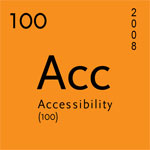
Cripple. Handicapped. Disabled. Physically challenged. Person with a disability. It doesn’t really matter what term is used, does it? After all, is not a rose by any other name still a rose?
Anthropologist Bronislaw Malinowski suggested that “language and culture are indivisible, our language is our culture and how we use it reflects on our culture.†(Quoted from Susan Balandin, Susan. “Transitions – A lifelong journey.†School of Communication Sciences and Disorders: The University of Sydney.) Through history, culture has dismissed, discounted, and discarded those seen as different or disabled. Preoccupied with physical perfection in ancient Greek times, infants who did not measure up were drowned in the river. In medieval times, the disabled, feeble-minded, and malformed were court jesters and exhibitions at freak shows — things to be laughed at, ridiculed, and feared. More recently, the disabled were the first group to be murdered by the Nazis.
An indicator of a society’s regard for the disabled lays in the terms used to label them. For example in English, invalid means “not valid†or “not acceptable.†Handicap conjures up an image of someone on the street corner with “cap in hand,†begging for handouts and charity. These labels degrade individuals by focusing on their differences or incapabilities, rather than on the individuals themselves. Labels link individuals to stereotypes, and often trump other indicators of identity. People use labels as a form of mental shorthand, for example, the disabled, the homeless, single-parents, and so on.
Until recently, the prevalent model of disability has been the medical model in which the disabled person is seen as the problem: “We are to be adapted to fit into the world as it is.†In this model, terms frequently used include confined to a wheelchair, housebound, suffers from, stricken with, needs help, needs a cure, can’t walk, can’t talk. Usually the focus is on the impairment, rather than the needs of the individual. This language emphasizes dependency, pity, fear and patronizing attitudes and reinforces negative stereotypes of disabled people. In this model, “most disablement is created by oppressive social systems.â€
In the late 1980s, largely influenced by people with disabilities themselves who argued that disability is a socially constructed concept and society itself creates the disability, there was a shift from the medical model to the social model. In this model, prejudice, discrimination, and inaccessible environments are the disabling factors, rather than the medical conditions.
The social model of disability highlights the use of language to disempower, as the medical profession and government imposed limiting and negative labels. This type of language is used as a way to control, dominate, and subtly or blatantly discriminate. This model gave way to the empowerment of people with disabilities through the development of a vigorous disabled identity and self-advocacy movement.
Then, language around disability began to change:
“.…we are not ‘the disabled.’ We are disabled people, or even people with disabilities. It is important that we do not allow ourselves to be dismissed as if we all come under this one great metaphysical category ‘the disabled.’ The effect of this is a depersonalization, a sweeping dismissal of our individuality, and a denial of our right to be seen as people with our own uniqueness, rather than as the anonymous constituents of a category or group.â€
For the first time in history, people with disabilities were finding their voice in determining which terms would define them. The result was a widespread social realization that the disabled population is not a homogenous group, but rather a group of individuals often lumped together—as many stereotyped groups are—despite differences in experiences, beliefs, needs, and goals.
Society no longer knew what to call these newly empowered people. Not wanting to upset or offend them, society grappled for more socially acceptable terminology: physically challenged, visually impaired, differently abled, disAbled, and so on. Canadian songwriter Jane Field expressed this sentiment in The Fishing is Free:
No one knows just what to call us
which label should befall us,
And they’re some dandy terms from which to choose.
My favourite’s “wheelchair-bound†‘cause it has a
bondage sound.
Oh it’s fun to guess what term they’re going to use.
Although the terms used to refer to people with disabilities are evolving, the language used to describe their experiences seem to be still somewhat medicalized. Able-bodied individuals exercise, workout, and have personal fitness trainers, while individuals with disabilities get rehab, therapy, and have physiotherapists. Able-bodied children take music lessons, children with disabilities receive music therapy. Able-bodied children do swimming lessons, children with disabilities get hydrotherapy. Such language still implies a sense of dependency and inferiority; a sense that the experiences are happening to the individual, rather than the individual being actively involved.
There is still some distance to go before people with disabilities are acknowledged as equals in society. The use of language and choice of words go a long ways in empowering and liberating, and thus, creating equality. For example, one wonders if the labels Olympians and Paralympians are viewed equal, as having the same high-quality of athleticism, determination, and commitment. Is this differentiation between athletes necessary? What purpose does this distinction serve? What stereotypes are reinforced?
Words can hurt or they can heal; they can disempower or empower; they can reinforce negative stereotypes or enlighten. Consider the language you use everyday. Does it convey the right message?
Empower Your Words
When communicating, choice of words can be quite empowering and liberating.
Words like gimp, cripple, and handicapped convey a different image than a person with a disability, a man with multiple sclerosis, or a businesswoman with cerebral palsy.
If you are unsure of what terminology is appropriate, keep these three simple tips in mind:
- Put people first, not their disability.
- Individuals with disabilities have different preferences regarding terminology. To ease awkward situations, simply ask the individual what he or she prefers — if such terminology is even necessary in the situation.
- Remember, we all have names. If the particular situation does not require disability-related terminology, simply use our names, please.
The key is to speak to and refer to people — all people — in a respectful manner.
(Originally written for SPARC BC News, Fall 2005.)
Accessibility 100 is a series of 100 easy-to-implement, free and inexpensive tips for improving accessibility for people with disabilities. This is a community project. Feel free to leave your comments, questions and ideas for future Accessibility 100 posts.
Get the entire series by subscribing to this blog by filling in the form in the upper right corner or by subscribing to the RSS feed.
If you enjoyed this post, consider buying me a chai tea latte. Thanks kindly.

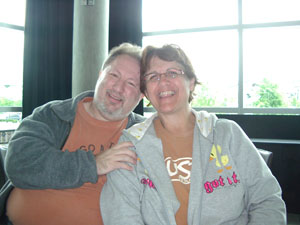
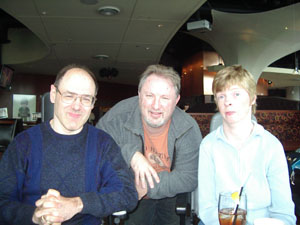


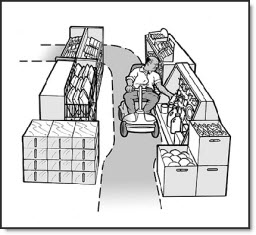
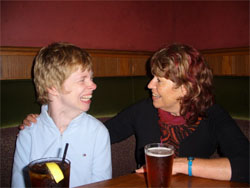
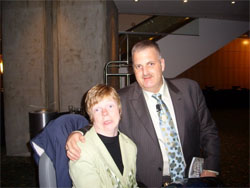
 Subscribe via RSS
Subscribe via RSS



